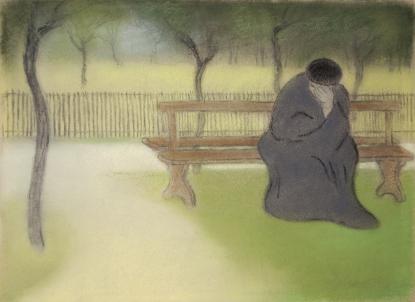2025. October 2. Thursday
Rippl-Rónai Museum - Kaposvár
|
|
Address: 7400, Kaposvár Fő u. 10.
Phone number: (20) 287-9323
E-mail: titkarsag@smmi.hu
Opening hours: 01.04-31.10.: Tue-Sun 10-16
01.11-31.03.: Tue-Sun 10-15 |
The exhibition has closed for visitors.
2010.05.27. - 2010.08.22.
Museum tickets, service costs:
|
Individual ticket for adults
|
800 HUF
|
|
|
Group ticket for adults
(over 10 people)
|
700 HUF
|
/ capita
|
|
Individual ticket for students
|
400 HUF
|
|
|
Group ticket for students
(over 10 people)
|
350 HUF
|
/ capita
|
|
Individual ticket for pensioners
|
400 HUF
|
|
|
Group ticket for pensioners
(over 10 people)
|
350 HUF
|
/ capita
|
|
Ticket for families
|
1700 HUF
|
/ family
|
|
Group program ticket for children
|
700 HUF
|
|
|
Season ticket
|
2300 HUF
|
|
|
Individual season ticket
|
1200 HUF
|
/ capita / 4 occasions
|
|
Group professional guide
|
2800 HUF
|
/ group / exhibition
|
Ripple-Rónai and his friend, the Scottish J. P. Knowles moved to the outskirts of Paris, to Neuilly. Ripple-Rónai's interest was oriented towards French artistic intentions by his friend. Affected by the exhibitions the two men visited together, their style took a turn towards modernism. Their pictures' style was similar to the notions of the Nabis Group who Ripple-Rónai also met via Knowles.

The word 'nabis' means prophet and enlightenment in Hebrew. This was the word, partly seriously, partly for fun, the young men who belonged to the circle used to call themselves. Their works were influenced by symbolism, but many of the artists were also influenced by philosophy and mysticism. They represented notions similar to that of Gauguin, and they were direct forerunners of modern painting art of the 20th century in Hungary.
Ripple-Rónai's 'black era' pictures were created in Neully in the 1890s. This artistic period can be characterised by black contours, unmixed colours. In pictures painted by artists of the Nabis group, the perspective is of less importance but flat-like decorativity, silhouette and the role of outlines gained importance. The topic is gone completely: the figures and the scene are added symbolic meaning. Many of the topics the Nabis group used are to there be discovered in pictures by Ripple-Rónai, e.g. a variation of intimate portraits, character portraits, melancholic, pondering women.
Ripple-Rónai visited Paul Gauguin and Paul Cezanne in Paris, did lithographs in the Ancourt Printing House, and was accepted by artists like Toulouse Lautrec or those who grouped around the periodical "Revue Blanche" called "Les artist intelligent". Many of them, Vuillard, Bonnard, Roussel, Denis, Sérusier, Ranson and Vallotton often visited the Hungarian painter in Neully. Ripple-Rónai was good friends with the first three of the above mentioned artist, as well as Maillol. He himself got involved in embroidery influenced by the French artist, while he encouraged Maillot to try sculpture. The 'Intelligent Artists' fundamentally determined Ripple-Rónai's art in the field of graphics and his applied art intentions that were completely novel in Hungary.
The Rippl-Rónai Museum in Kaposvár presents works of art by Ripple-Rónai and French artists like Maurice Denis, Pierre Bonnard, Edouard Vuillard, Paul Gauguin, Henri de Toulouse-Lautrec, Paul Sérusier, as well as some Nabis artists. The material includes paintings and graphics, in addition to applied art Ripple-Rónai created in France, including designs for the dining room for the Andrássy family.

The word 'nabis' means prophet and enlightenment in Hebrew. This was the word, partly seriously, partly for fun, the young men who belonged to the circle used to call themselves. Their works were influenced by symbolism, but many of the artists were also influenced by philosophy and mysticism. They represented notions similar to that of Gauguin, and they were direct forerunners of modern painting art of the 20th century in Hungary.
Ripple-Rónai's 'black era' pictures were created in Neully in the 1890s. This artistic period can be characterised by black contours, unmixed colours. In pictures painted by artists of the Nabis group, the perspective is of less importance but flat-like decorativity, silhouette and the role of outlines gained importance. The topic is gone completely: the figures and the scene are added symbolic meaning. Many of the topics the Nabis group used are to there be discovered in pictures by Ripple-Rónai, e.g. a variation of intimate portraits, character portraits, melancholic, pondering women.
Ripple-Rónai visited Paul Gauguin and Paul Cezanne in Paris, did lithographs in the Ancourt Printing House, and was accepted by artists like Toulouse Lautrec or those who grouped around the periodical "Revue Blanche" called "Les artist intelligent". Many of them, Vuillard, Bonnard, Roussel, Denis, Sérusier, Ranson and Vallotton often visited the Hungarian painter in Neully. Ripple-Rónai was good friends with the first three of the above mentioned artist, as well as Maillol. He himself got involved in embroidery influenced by the French artist, while he encouraged Maillot to try sculpture. The 'Intelligent Artists' fundamentally determined Ripple-Rónai's art in the field of graphics and his applied art intentions that were completely novel in Hungary.
The Rippl-Rónai Museum in Kaposvár presents works of art by Ripple-Rónai and French artists like Maurice Denis, Pierre Bonnard, Edouard Vuillard, Paul Gauguin, Henri de Toulouse-Lautrec, Paul Sérusier, as well as some Nabis artists. The material includes paintings and graphics, in addition to applied art Ripple-Rónai created in France, including designs for the dining room for the Andrássy family.
